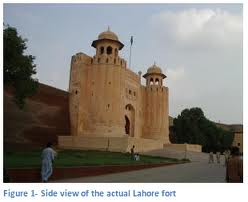Jalaluddin Mohammad Akbar (1543-1605)
I know it has been too long since I posted but things are a bit busy here. I have started what I call a new hobby, but my some consider it a business (see link in side bar for more info on “Charmed by Shakespeare”) that has taken up all my spare time lately but that is now running smoothly but slowly. I will consider it a business when we break even with the investments into it. ANYWAY…. Enough excuses.One of my first charms-Henry VI
Our next Great Leader in History is about the Mughal Emperor Jalaluddin Mohammad Akbar (1543-1605), who reigned in the regions of Afghanistan, Pakistan and Northern India. He came to the throne at the young age of 13 after the sudden death of his father, Humayan due to a fall.
The court of young Akbar, age 13, showing his first imperial act: the arrest of an unruly courtier, who was once a favorite of Akbar's father. Illustration from a manuscript of the Akbarnama
Barely out of his teens Akbar began to quickly consolidate his kingdom and to centralize the administration of the Empire. Although a Muslim by birth he took a keen interest in all the faiths that his subjects practiced and never allowed persecutions based on faith. He never discriminated between the Hindus or Muslims.
His first wife (he had 33 wives), and some say his most beloved wife, was a Hindu princess by the name of Hira Kunwar (some call her Jodhabai), was the daughter of Bharmal Raja of Amber. They were married in February of 1562 in Sambhar and their son was the next Mughal emperor Jahangir. Some of the details of this marriage are still disputed today but it did create an alliance that caused a major shift in the balance of power within the Indian subcontinent. It also began a period of peace between the Mughals and the Rajputs.
Akbar had to deal with the usual intrigue in his court but you can read about that elsewhere. I wanted to go on and tell you of the things he accomplished during his reign.
Religion
As I already mentioned, he was interested in the religions of all of his subjects and tried to learn about them. He was taught about Jain, and Sikh followers and in his mind, he eventually formed an amalgam of the various religions like, Islam, Hinduism, Jainism, and Sikhism. He even at one time had Portuguese fathers visit his court and teach him about Christianity. He tried to form a new religion based on the best in all these religions but it never gained popularity.
Politics
Akbar was able to centralize his government and unlike his predecessors did not exact a large tribute of the territories he conquered. Instead of forcing the rulers of the defeated territories to step down, he integrated them into the administration of that region and provided for them to become military leaders.
He abolished all the taxes that were levied on all non-Muslims. These taxes had been in place since the Muslims gained power.
Education
Although some historians believe Akbar suffered from learning disabilities, he was a leader that loved to learn. He collected thousands of beautifully written manuscripts during his lifetime. He also surrounded himself with writers, scholars, translators, painters and musicians.
Some call this period the Persian Renaissance of literature. He also was a great patron of the arts, architecture. Many magnificent buildings and palaces were built under his reign, many of which are still standing.
Summary
As a contemporary of Queen Elizabeth I of England, he ruled over 140 million subject compared to her 5 million.
Akbar the Great's Tomb
Like Alfred the Great of England that I posted about a few weeks ago, Akbar the Great was great because of his great leadership of his people, not because of his strength in defeating so many territories.
He was indeed a great leader for his time, and I feel many leaders today would benefit by following his example as a leader.
Additional Information:
There is a FANTASTIC movie based on the life of Jalaluddin Mohammad Akbar entitled “Jodhaa Akbar”. It is beautiful! Check it out! The music in the background is from the movie.
Also, PBS had a great series on the history of India and they talked about Akbar quite a bit. You can find the entire series through Netflix but here is a small piece of that footage about Akbar: http://www.pbs.org/thestoryofindia/timeline/5/ (click on the timeline that mentions Akbar the Great for the video to start).




















































